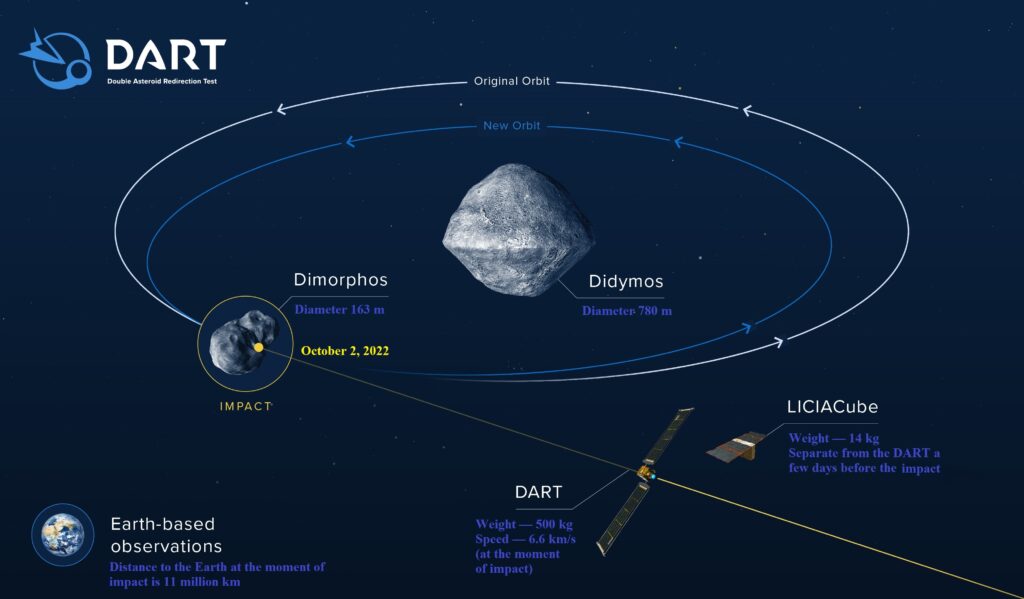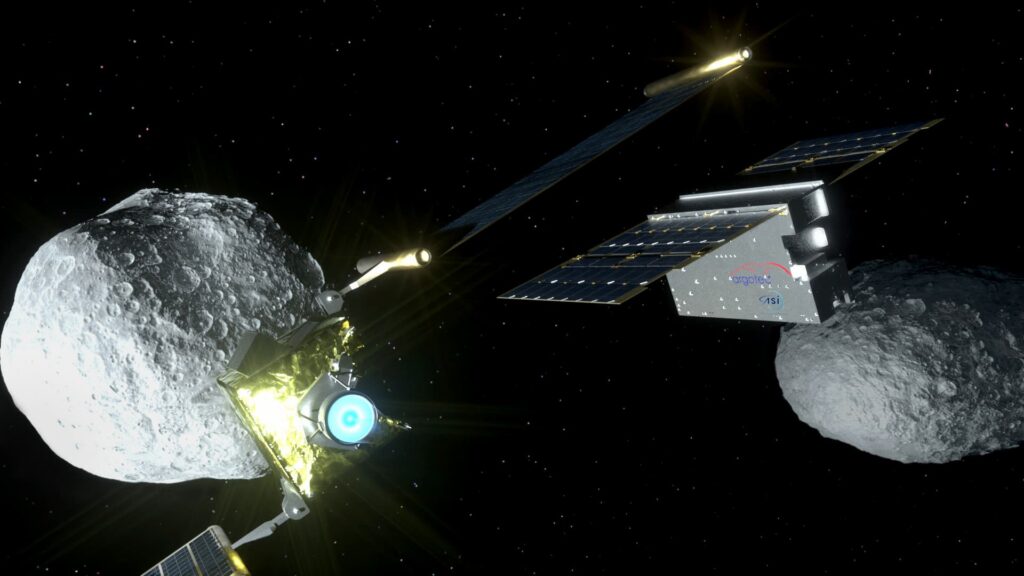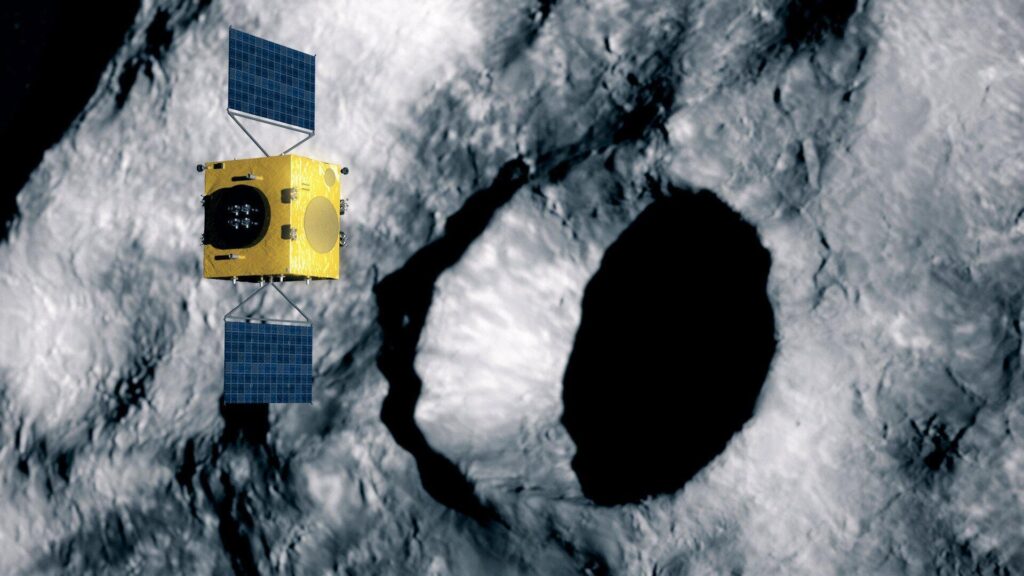On September 27, one of the most spectacular space events of this year awaits us. The DART (Double Asteroid Redirection Test) interplanetary probe will crash into the 160-meter asteroid Dimorphos, which is a moon of the larger object Didymos (65803 Didymos). But why is NASA going to break the 110-millionth device? Let’s figure it out.
Objectives and technical structure of the DART mission
The main goal of the DART mission is to test the possibility of changing the orbital parameters of a small body by kinetic action. Simply put, NASA wants to find out how an asteroid impact will affect its orbit. In the future, such technology may be useful to Earthlings to deflect an object threatening it from our planet.

The total mass of the DART is 550 kg (670 kg at the time of launch), the span is 19 meters (including solar panels). As a power plant, it uses the xenon ion engine NEXT.
Since DART, in fact, is a space kamikaze, NASA did not complicate its design with unnecessary devices. The scientific stuffing of the device consists of a single instrument — a high-resolution camera DRACO. The effectiveness of its work will determine the success of the entire mission. A day before the collision, DART will be taken offline, after which its on-board computer will independently calculate the position of the asteroid from DRACO images and perform the necessary course corrections so as not to miss the target.
Asteroid collision and Gecko camera
The collision with the Dimorphos will take place on September 27 at 2:14 a.m. GMT+3. At the moment of impact, the asteroid will be at a distance of 11 million km from Earth.

The collision of the probe with an asteroid and its consequences will be closely monitored by radars, a network of ground-based observatories and even the Hubble telescope. But the most interesting pictures are likely to be taken by the 14-kilogram Italian cubesat LICIACube, which successfully separated from DART on September 12.
Three days after the impact, LICIACube will fly at a distance of 55 km from the surface of the Dimorphos and photograph the crater formed as a result of the collision. For this, the cubesat is equipped with two cameras. One of them (the Gecko camera) was built by Dragonfly Aerospace, owned by Ukrainian entrepreneur and philanthropist Max Poliakov.
Hera Mission
In a few years, the experiment will be continued. In 2024, ESA will launch the Hera device. In January 2027, it will reach Dimorphos, after which it will photograph the formed crater, and also conduct a comprehensive study of both small bodies. These data will complement the results obtained during ground-based observations, as well as help astronomers better understand the properties and evolution of binary asteroids.

Together with Hera, several microprobes will also go to the Dimorphos. They will be assigned various tasks, including radar survey of asteroids. They will be the first cubesats launched by ESA into interplanetary space.
Follow us on Twitter to get the most interesting space news in time
https://twitter.com/ust_magazine
